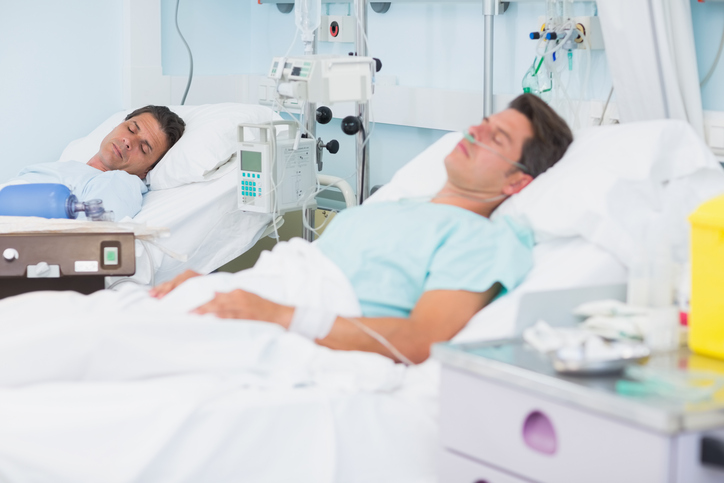General patient rooms
Reduce the risk of outbreaks & infection
Inactivate airborne pathogens & reduce pollutants in multi-bed wards
The risk of contamination can be several times higher in multi-bed wards compared to single-bed rooms as bacteria originating from one patient can spread to others occupying the same space via air currents. Even with rigorous hand washing between patients, bacteria can be picked up and spread between patients by healthcare workers from multiple surfaces throughout the ward.
Inactivate airborne and surface bacteria for cleaner air, hands and surfaces
Reduce fine particulate introduced by visitors that can transport infectious microbes
Neutralize offensive odors that affect patient and staff comfort
Air disinfection for healthcare environments
Wherever people are coming and going, pathogens and pollutants are being introduced to the indoor environment. WellAir's portable air disinfection devices and air cleaning systems use our patented NanoStrikeTM Technology to inactivate aerosolized viruses, bacteria, and fungi. Our Defend range of FDA-cleared 510(k) Class II medical devices combines our powerful NanoStrike Technology with a triple-stage filtration system. These devices not only inactivate pathogens but clear the air of pollutants such as pollen, particulate matter (PM), volatile organic compounds (VOCs), gases, chemicals, and odors.
UVC surface disinfection for healthcare environments
NuvaWave puts the power of hospital-grade surface disinfection in the palm of your hand. It is an instant UVC device proven to disinfect surfaces against deadly pathogens in one second with its targeted UVC light and portable, handheld design. NuvaWave is designed to be safe, fighting pathogens without needing to clear the room of patients and staff.
The Importance of WellAir Air Cleaning and Purification Devices in Intensive Care Units
This peer-reviewed study was published in the Journal of Hospital Infection reports on WellAir Air Cleaning and Purification Devices in an ICU. This first-of-its-kind study highlights the number of microorganisms in the air and evaluates the effectiveness of air purifiers in reducing the rate of nosocomial infections within the ICU.
Healthcare-acquired infections
Why Disinfect the Air
Healthcare-acquired infection (HAI) is a serious and widespread problem with an estimated 1 in 10 patients acquiring an infection during a hospital stay. In American hospitals alone, the Centers for Disease Control (CDC) estimates that HAIs account for an estimated 1.7 million infections and 99,000 associated deaths each year.
Over 30% of healthcare-acquired infections possibly involve airborne transmission at some point.



